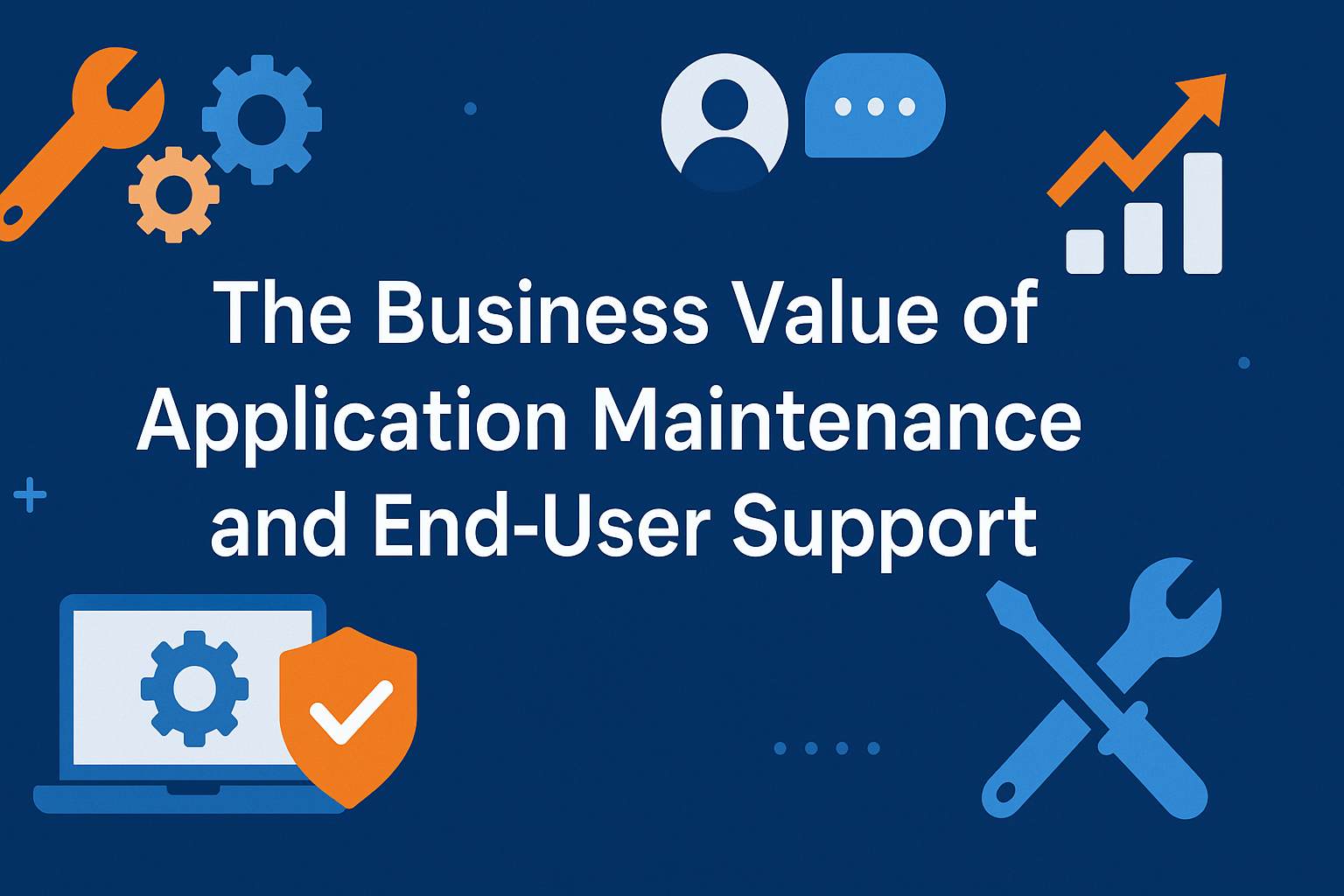 In today’s fast-paced, cloud-powered world, SaaS uptime isn’t just a technical term—it’s a promise that your product will be reliable, available, and always on. Companies across industries depend heavily on Software as a Service (SaaS) platforms to handle their core operations. Even a few minutes of downtime can result in lost revenue, frustrated users, and damage to your brand. This is why Application Maintenance and End-User Support are so critical. Together, they form the foundation of high SaaS availability, smooth user experience, and long-term platform stability.
In today’s fast-paced, cloud-powered world, SaaS uptime isn’t just a technical term—it’s a promise that your product will be reliable, available, and always on. Companies across industries depend heavily on Software as a Service (SaaS) platforms to handle their core operations. Even a few minutes of downtime can result in lost revenue, frustrated users, and damage to your brand. This is why Application Maintenance and End-User Support are so critical. Together, they form the foundation of high SaaS availability, smooth user experience, and long-term platform stability.
What is Application Maintenance?
Application maintenance involves the ongoing process of updating, monitoring, and enhancing software to ensure its stability, security, and optimal performance. It involves both proactive maintenance—such as applying updates and monitoring systems—and reactive support to fix unexpected issues quickly.
Key Components of Application Maintenance:
Infrastructure Upkeep
Maintaining servers, upgrading hardware, and optimizing databases helps your SaaS platform meet current and future performance needs. This keeps the application stable and responsive.
Security Updates
Consistent application of security patches is essential to safeguard against cyberattacks and protect sensitive data. These updates protect user information and keep your platform compliant with industry standards.
System Optimization
Performance monitoring assists in identifying bottlenecks and opportunities for enhancement. Refining the code and infrastructure enhances the speed, efficiency, and scalability of applications.
Change Management
When deploying new features or making changes, controlled release, thorough testing, and proper documentation are essential. This prevents disruptions and minimizes errors.
What is End-User Support?
While maintenance handles the technical side, End-User Support focuses on the people using your SaaS product every day. An exceptional user experience is essential for customer satisfaction, engagement, and enduring loyalty. Support should be helpful, fast, and easy to access.
Key Components of End-User Support:
Technical Support: Providing skilled support agents who can troubleshoot issues, guide users, and solve problems quickly builds trust and reliability.
User Training: Training resources like webinars, tutorials, and walkthroughs help users adjust to new features or updates more easily and reduce confusion.
Documentation: A rich knowledge base with FAQs, how-to guides, and troubleshooting tips allows users to solve issues on their own, reducing support load.
Monitoring & Alerts: Real-time performance monitoring and automated alerts help detect issues before users even notice them. This proactive support minimizes downtime.
Why Application Maintenance and Support Matter
✅ Scalability and Security
Continuous updates ensure the SaaS platform remains secure and can grow with user demands without performance drops.
✅ Cost Efficiency
Early detection of issues during maintenance helps avoid bigger failures later. This reduces both downtime and long-term costs.
✅ Customer Satisfaction
Quick issue resolution and easy-to-use support channels improve user experience and boost customer confidence.
✅ Maximized Uptime
Together, maintenance and support ensure high SaaS uptime, reduce downtime risks, and improve overall service availability.
SaaS Availability vs. Uptime: What’s the Difference?
Availability: The proportion of time that your SaaS application is accessible to users.
Uptime: The actual amount of continuous time your application has been working without interruptions.
For example, 99.9% availability means only around 43 minutes of downtime per month, which is the minimum expected for enterprise-grade SaaS applications.
How to Improve SaaS Uptime?
To achieve high uptime and availability, follow these best practices:
Use Cloud-based or Distributed Infrastructure
Enables better load balancing, fault tolerance, and automatic failover during outages.
Adopt DevOps or SRE Culture
Use automation, continuous monitoring, and agile development methods for faster deployments and fewer errors.
Proactive Incident Management
Identify and resolve issues quickly using automated alerts, logs, and incident workflows.
Regular Feedback Loops
Gather and analyze feedback from both systems and users to improve continuously.
Communicating SaaS Uptime to Customers
Being transparent with your users and stakeholders builds trust and loyalty, even during outages. Make sure to communicate uptime performance through:
- A publicly accessible status page displaying real-time and historical uptime data
- Weekly or monthly uptime reports that outline system health and improvements
- Real-time incident alerts and status updates
- Strong support channels for user concerns and queries
Conclusion
Application Maintenance and End-User Support are not optional—they are the backbone of SaaS uptime. They help your platform stay fast, secure, and always available while keeping your users happy and confident.
At actsupport, we specialize in end-to-end SaaS support solutions, offering everything from real-time monitoring and maintenance to responsive user support. Whether you’re running a startup or a global SaaS product, our team helps you maintain peak performance and 24/7 reliability.
Stay updated! Follow us on social media! Facebook, Twitter, LinkedIn
Check out our newest blog entry (DevOps Drives Modern Infrastructure Success)




